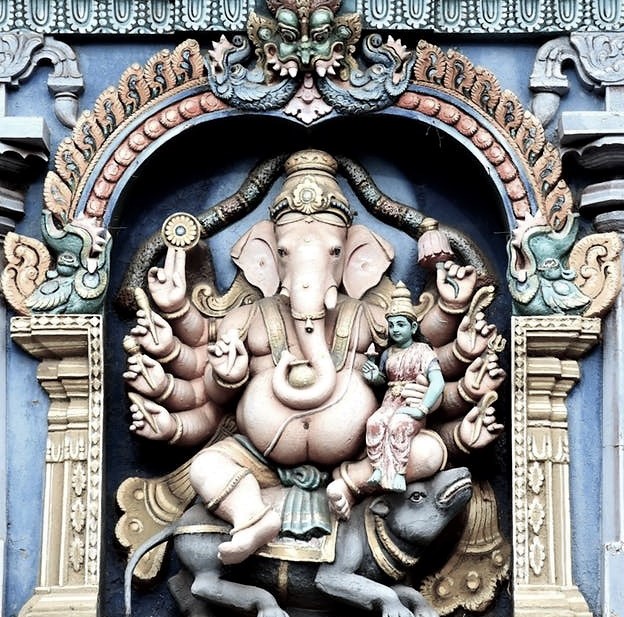- Special FeaturesFoundation Year1089ADSthala TreeTheerthamRathamArchitectureNagara styleOther SpecialityThis temple is also known as "Khajuraho of Chhattisgarh".
- Sthala PuranThe temple complex, rich in history and archeological details, is dated to the Kalachuri period (10th-12th centuries, one ruling over areas in Central India in west Madhya Pradesh, Rajasthan and were called Chedi or Haihaya (Heyheya) (northern branch)) with close identity with the sculptures found in nearby archeological sites such as Janjgir, Kalachuri, Narayanpur and Ratanpur sites. The brick temples were built during the rule of Pandus and are similar to those built in Kharod, Palari, Rajim and Sirpur in the state . The Temple was built by Laxman Dev Rai & Gopal Dev of Faninagvansh Dynasty. The temple complex, highlighted as a "scintillating poetry in stone", is credited to Nagwanshi Kings who practiced tantrism and who ruled in the then Southern Koshal region, which is now the state of Chhattisgarh. Its construction is dated between the 7th and 12th centuries. As the Gond Tribals of the area worshiped Lord Shiva whom they called Bhoramdeo, the temple was also named Bhoramdeo with the Shiva Linga deified in it.
- Architecture
The first stage of the temple is a large platform or plinth that is built to height of 5 feet (1.5 m). The platform itself, on its exterior faces, has many sculptures of Hindu deities carved on it.The temple built over this platform which measures 60 feet (18 m) x 40 feet (12 m) has the conventional Hindu temple composition of a mandapa (hall), followed by an antral or passage leading to the Garbhagriha or sanctum sanctorum, the main enclosure in the temple where the chief deity, Shiva in form of a Shiva Linga, is deified. The mandapa is square on plan and is supported on four main central pillars, apart from the peripheral pillars. The sanctum sanctorum measures 9 feet (2.7 m)x9 feet (2.7 m). All the three enclosures are linked by passageways.
The front entrance door of the temple has sculpted images of Ganga and Yamuna on its doorpost.Also sculpted on the exterior and interior walls of the temple are the bass reliefs in the entablature part, of elephants, mythical figures and sensuous sculptures; the sensuous figures on the exterior walls represent the Kama Sutra, the erotic postures which reflects the then prevailing social, cultural, architectural and religious ethos in the region.
The lowest tier of the exterior walls is embellished with sculptures of lions and elephants. The material used for the sculptures are of black and ochre stones (black stone is used to carve pantheon gods while Ochre stone is used for other sculptures). Also sculptured on the exterior face of the temple are divine images of Vishnu and his incarnations. In addition, the entrance doors are flanked by images of mythological figures, which are of 1 or 2 ft in height
- Alankar of Deity
- Prayers and BenefitsSpecial Vratas and PrayersOfferings to DeityStotras and Mantras
- Festivals
- Sodasha Upcharas
- Prasadhas
- Social ActivitiesAnnadhanMarriageEar BoringHead ShaveDanaasEducation FacilitiesSocial DrivesOther Activities
- Arjita Seva
- Tags

